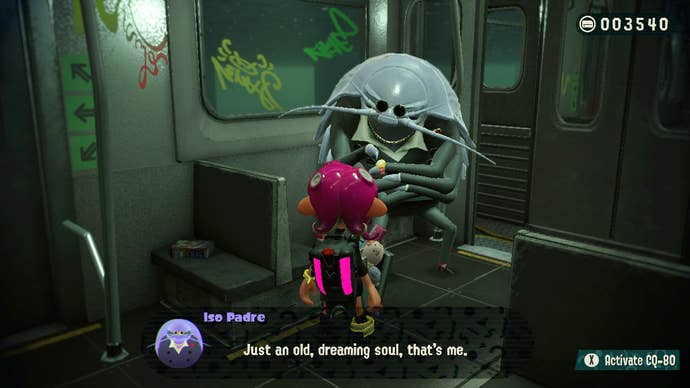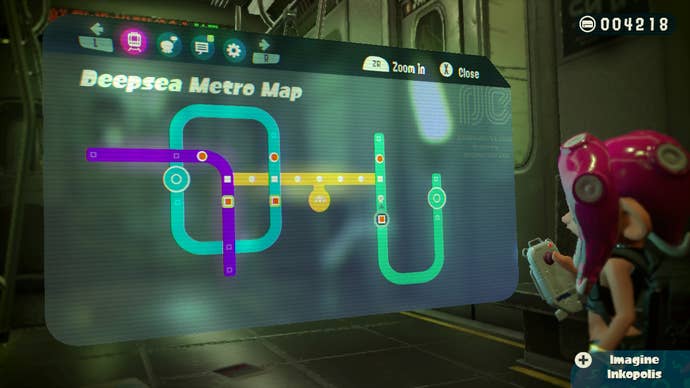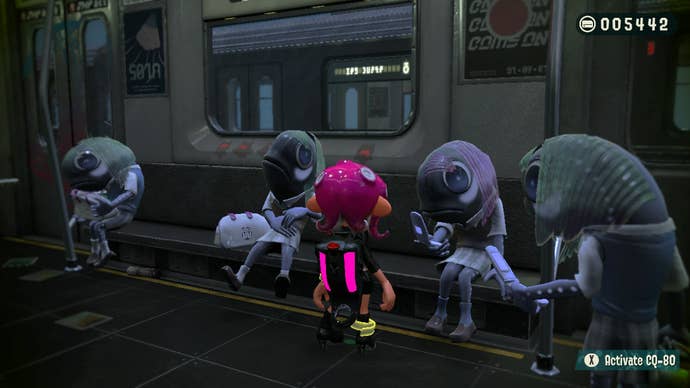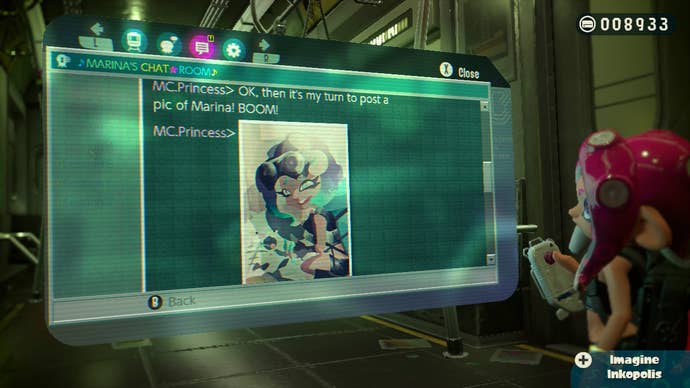Splatoon 2: Octo Expansion Review
And yes, it kicked my ass 'til the very end.
This article first appeared on USgamer, a partner publication of VG247. Some content, such as this article, has been migrated to VG247 for posterity after USgamer's closure - but it has not been edited or further vetted by the VG247 team.
Have you ever experienced a moment in a video game where you felt like you were being punished? Like it's taking glee in beating you to a pulp; in making you miserable; in having you question why you're putting yourself through such devilish agony. Shockingly, Splatoon 2's new Octo Expansion DLC is full of moments like that. In fact, it never really lets up.
Splatoon 2: Octo Expansion is the first paid DLC for the series. Previously, updates have all been free, bringing new weapons, maps, and gear to the game over time. Octo Expansion brings a lot to the series: playable Octolings, a new story campaign, more lore, and new flashy gear to wear in multiplayer. It's an expansion fit only for the most dedicated fans of Splatoon. In some ways, it feels like the campaign the base game should have had all along. Or at least it would feel that way if it wasn't so unabashedly difficult.

It's a really creative campaign in terms of how you navigate it. In the first two Splatoon games, the single-player campaign is sectioned off into distinct floating islands with a bundle of levels available to choose from. It was never super linear in a strict sense, because you could tackle the island's levels at your leisure until you unlocked the boss. In Octo Expansion, you're given a subway system to travel across. The more levels you play, the more likely you are to unlock a new subway line with additional levels on it. If you get stuck on a level, it's easy to return to the subway train and travel elsewhere. You have freedom.
But the method with which you enter levels through paying a toll fee (this is a deep sea-set subway system after all) ended up making me reluctant to even test the toughest of levels at first blush. Usually the tougher the level, the more expensive the cost of entry. And if you fail one or three or five times (depending on the level's base amount of lives), you have to repay the entrance fee again. For instance, if a level costs 1,000 CQ points (the DLC's in-game currency), failure can quickly drain how much you have at a given time. The currency system for accessing levels just ends up adding an extra dose of tedium to the subway setting rather than atmosphere; even if you become relatively flush with cash in the post-game after "beating" the central storyline.
The levels themselves are a lot more inventive and puzzle oriented than the first two games' campaigns. Some are easier, like shooting out boxes to replicate a statue or pushing a giant 8-ball around a course (where designers who also worked on Breath of the Wild probably utilized their expertise). Others like protecting an orb from damage as enemies swarm towards it, to souped up boss fights, possess a far greater challenge. Some missions feel balanced and fair, while others are bafflingly difficult—like the races against time where you fall just under a second short, again and again. And with the cost of entry, it often doesn't feel worth the money-gobbling repeated entrance fee.




Luckily, overcoming all 80 of the expansion's levels isn't necessary for seeing the story through. You start as an Octoling with amnesia, Agent 8, awakened by the familiar Cap'n Cuttlefish (the first game's single-player campaign guide). Cap'n has lost his dearest ally though, the Inkling you played as in the first Splatoon's campaign: Agent 3. Together, the two of you embark on a quest to find Agent 3 and escape to Inkopolis above. In Octo Expansion, your primary goal is to track down four "Thangs" (yes, they're literally called "thangs") across the subway system to earn your freedom. These Thangs are marked on the subway map on certain routes, and collecting all four leads you into a final multi-tiered level.
Reaching this point takes around four hours, though if you're not as stubborn as I am in my dedication to finish levels, you could reach the final section far quicker. That's because Octo Expansion offers a skip option if you fail enough times, wherein Marina (oh yeah, Splatoon 2's resident pop stars help guide you through levels too) hacks the level and allows you to progress onward in a subway line. There's a catch though—you're not rewarded with a complete collectible "Mem cake," which contains a poem expanding the series' lore. These bite-sized poems that follow an almost-haiku-like structure are always quirky and worth the read. Also to unlock the secret boss at the end, you have to collect all 80 mem cakes. (So, no skipping.)
Atmospherically, Octo Expansion is the most interesting Splatoon's ever been. Rather than a hip and cool world, Octo Expansion is grimy and eerie. The music in levels isn't as energetic as you'd find in the base campaign or multiplayer battles; it's experimental and dark sounding. With each new subway line unlocked, different deep sea critters join your subway car. On one line, clams were everywhere. On another, giant sea creatures were wearing letterman jackets. Joined with the mem cakes, the cute chatlogs between Pearl, Marina, and Cap'n Cuttlefish, and the plot itself, Octo Expansion expands the Splatoon universe more than ever before, detailing a different side of the post-apocalyptic Mollusc Era, previously only touched upon in the other campaigns' collectible Sunken Scrolls.

The finale sequence and its levels are easily the height of Splatoon's single-player endeavors too, or at least, they're up there with the final boss fight of the first game's campaign. The subway system is a clever way of changing up the series' campaign format, but the currency-based entrances and retries, as well as the artificial-feeling tedium hold Splatoon 2 back from being the best it can really be. There are moments of greatness in this campaign, but I'd still only recommend it to the biggest Splatoon fans—the ones who play it on a nightly basis like me, itching for an Octoling to join Inkopolis in Turf War and Ranked battles. Otherwise, more casual fans might find Octo Expansion to be a touch too grueling to love.
I hope Octo Expansion is at least indicative of the future of the series. One not laser-focused on just multiplayer, one that goes further in enriching its delightfully weird world, one that experiments with Splatoon's unique ink-shooting and platforming quirks. In the meantime, at least we have the doubly charming and frustrating Octo Expansion.

